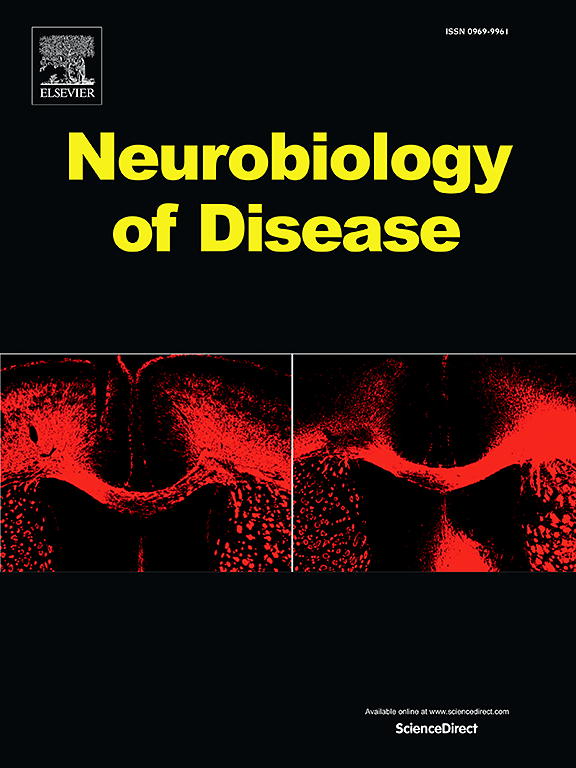Elucidating cortical neurovascular involvement in Huntington's disease using human brain tissue microarrays
IF 5.1
2区 医学
Q1 NEUROSCIENCES
引用次数: 0
Abstract
Although the genetic basis of Huntington's disease (HD) has been determined, the underlying pathophysiological mechanisms contributing to neurodegeneration remain largely unknown. In recent years, increasing evidence has posited vascular dysfunction as a significant early event in disease pathogenesis; however, these processes remain to be fully elucidated. High-content immunohistochemical screening studies were conducted on HD middle temporal gyrus (MTG) human brain tissue microarrays (TMAs) to investigate various components of the vascular system, including endothelial cells (UEA-1), pericytes (PDGFRβ), vascular smooth muscle cells (αSMA), extracellular matrix components (ECM; collagen IV and fibronectin), and leakage markers (haemoglobin and fibrinogen). Analyses of vascular markers revealed an increase in the number of vessels in the HD TMA cohort which was associated with advancing striatal pathology and earlier symptom onset. Furthermore, our findings highlight the preservation of pericytes, vascular smooth muscle cells, ECM components, and blood-brain barrier integrity in the HD MTG. Collectively, the TMA findings allude to mild vascular remodelling in the temporal cortex which is known to present with a lesser degree of neuronal degeneration in HD.
求助全文
约1分钟内获得全文
求助全文
来源期刊

Neurobiology of Disease
医学-神经科学
CiteScore
11.20
自引率
3.30%
发文量
270
审稿时长
76 days
期刊介绍:
Neurobiology of Disease is a major international journal at the interface between basic and clinical neuroscience. The journal provides a forum for the publication of top quality research papers on: molecular and cellular definitions of disease mechanisms, the neural systems and underpinning behavioral disorders, the genetics of inherited neurological and psychiatric diseases, nervous system aging, and findings relevant to the development of new therapies.
 求助内容:
求助内容: 应助结果提醒方式:
应助结果提醒方式:


